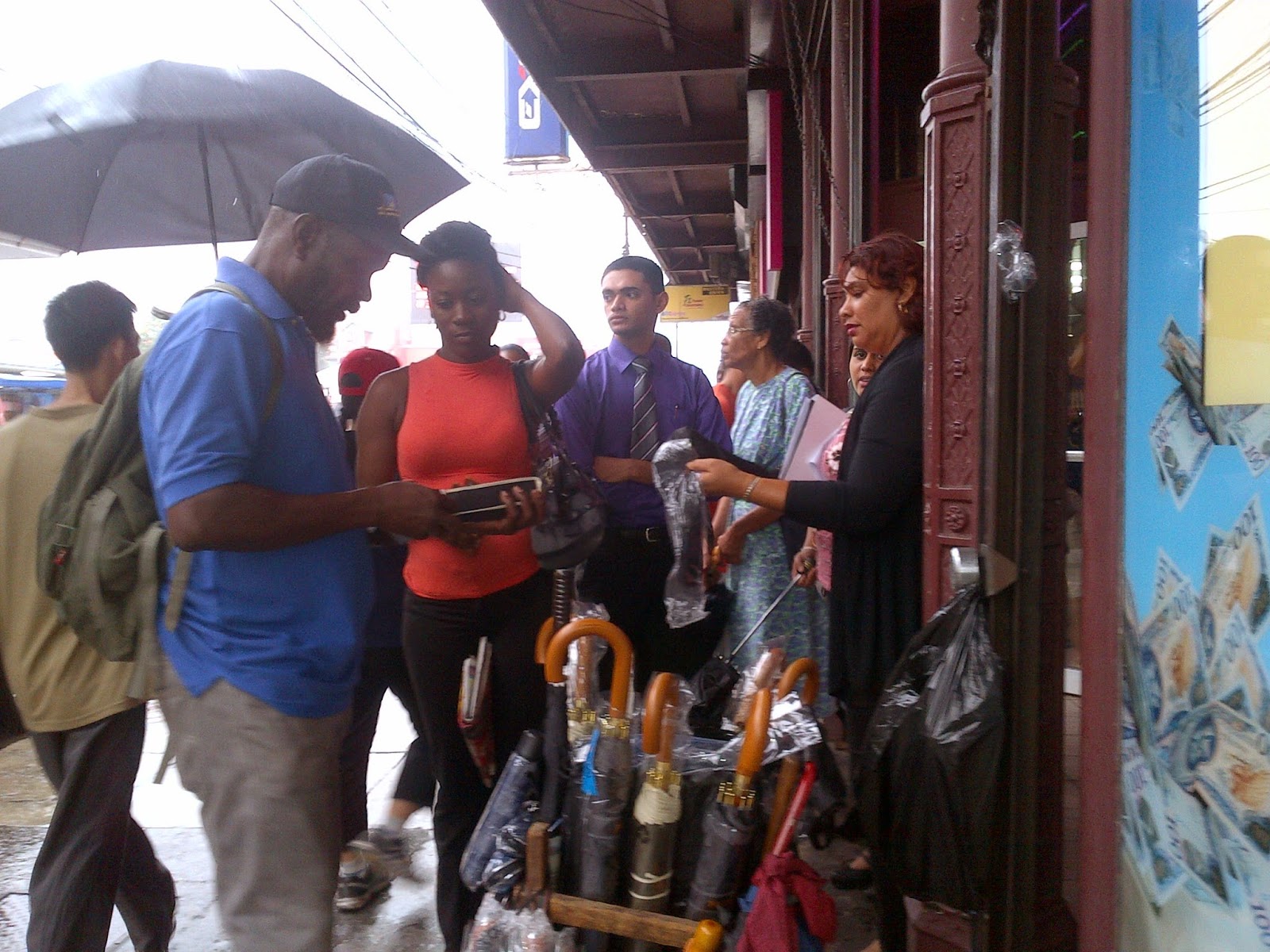Urban congestion encompasses a combination of causes and
side effects to which harms the daily commuter and city dweller. The
introductory video displays a range of mechanisms which greatly contributes to
the overwhelming effects of congestion and how this urban phenomenon holds
significant importance regarding proper planning of the city.
 |
| Forms of Urban Congestion Photo Courtesy: Cherise Ali, Gopiechand Boodhan, Navida Bachan and Shalisa Ali |
The business enterprise mainly consists of Banks located at
the heart of the City, often termed ‘Banker’s Lane’ to facilitate the financial
services to the mass public, as suggested by Pierre (2014). In this regard,
this portion of her blog relates to the focus of my 7th post; The
City of Commerce- Banker’s Lane, and how this attracts higher density
population into the city for commercial and financial activities as well as generates
congestion in terms of buildings in close proximity to each other, the volume
of cars in transit to and from these centres and the density of people visiting
these banks for various transactions. Like Ali (2014) suggests, the ‘shopaholic’
is always in need to withdraw money from fast services provided by banks in
order to fill their shopping bags.
Like Maloney (2014) says, ‘Transport systems are of great importance
in the city of Port-of-Spain. With reference to my 11th post on The
Travel Market, these transporting mediums are a means of transit to and from
the city, connecting all places to this Central Business District of
Port-of-Spain. With designated bus stops and taxi terminals, daily commuters
move from ‘Point A to Point B’ after being buzzled by the thick crowds that
gather, rushing the moving bus (Post 12: Rush Hour- Leaving the City.)
The “exhaustion of the urban hustle” as Ali (2014) terms it,
reflects the dynamics of urban stress and how congestion takes the energy out
of people. She suggests that spending hours in traffic to reach the city is a tedious
but necessary task of any individual. This correlates to my take on “Delayed
Workforce” (Post 3), which speaks of the inefficiency of workers who were
subject to long hours spent in a car or maxi as the case may be. Comparisons
made between both blogs indicate that inefficient transport systems are the
culprits regarding the quality and performance of our worker force. With increasing
stress levels people visit, as I would call it, the ‘City Spa’ to de-stress
oneself.
Additionally, vehicular traffic is often tagged as villains
of urban pollution and proves lethal to the health of the population and how
safe the air is to breathe. Vehicular exhaust from the build-up of traffic on
the roads significantly contributes toward the death of the atmosphere. Constant
flow of traffic would only result in the increasingly high gaseous
contamination, further enhancing the effects of Global House Effect as
suggested by Ragbir (2014). Her statements relate to my focus on congestion as
it is a direct effect of what happens when there is simply too much cars on the
roads (Post 2: A Long Wait to Enter the City), beit private cars or public
transport (Post 11: Travel Market) during peak hours (Post 12: Rush Hour-
Leaving the City) or perhaps when congestion is on a standstill (Post 3:
Delayed Workforce).
Ali, Cherise. 2014. De-stressing in the City that Never
Sleeps. Fast Paced Urban Lifestyle.
Ali, Cherise. 2014. The Urban Lifestyle of the ‘Shopaholic’.
Fast Paced Urban Lifestyle.
Ali, Cherise. 2014. The Exhaustion of the Urban Hustle. Fast
Paced Urban Lifestyle.
Maloney, Cheryl-Ann. 2014. Getting From Point A to Point B. Urban Cultural Dimension.
Pierre, Nichel. 2014. Urban Banking. Urban Commercialism.
Ragbir, Clea. 2014. Exhaust Fumes Clouding up the City. Pollution
in Cities.














